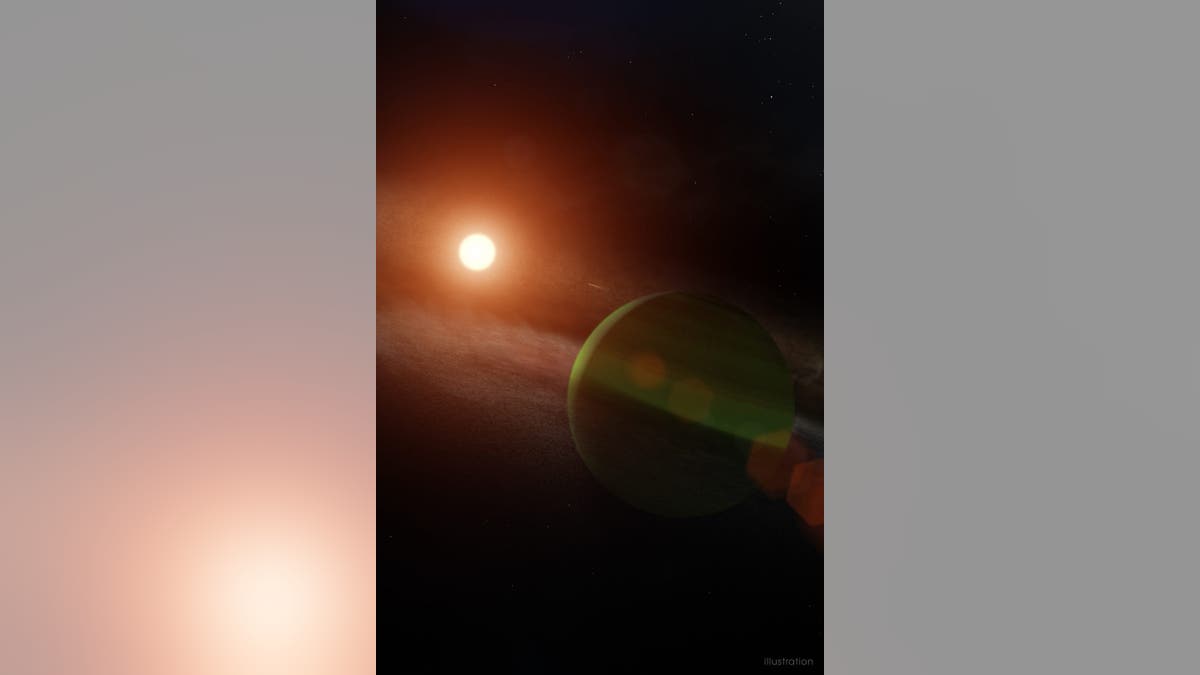Fox News Flash top headlines for June 25
Fox News Flash top headlines are here. Check out what's clicking on Foxnews.com.
Researchers have discovered a new planet the size of Neptune, approximately 32 light-years away from Earth.
A new study, published in the scientific journal Nature, details the discovery of AU Mic b, which is part of the AU Microscopii star system. Due to its proximity near the star, known as AU Mic, the exoplanet (a planet outside the Solar System) has an 8.5-day orbit.
“We think AU Mic b formed far from the star and migrated inward to its current orbit, something that can happen as planets interact gravitationally with a gas disk or with other planets,” said study co-author and Associate Project Scientist for TESS at NASA’s Goddard Space Flight Center Thomas Barclay in a statement. “By contrast, Beta Pictoris b’s orbit doesn’t appear to have migrated much at all. The differences between these similarly aged systems can tell us a lot about how planets form and migrate.”

This illustration depicts one interpretation of the planet AU Mic b and its young red dwarf host star. The system lies about 32 light-years away in the southern constellation Microsopium. (Credit: NASA's Goddard Space Flight Center/Chris Smith (USRA))
MILKY WAY GALAXY COULD HAVE 'OCEAN WORLDS' ALL OVER, NASA SAYS
AU Mic b was discovered by NASA's exoplanet-hunting Transiting Exoplanet Survey Satellite, or TESS and its retired Spitzer Space Telescope.
Estimated to be between 20 and 30 million years old, AU Mic is a "cool dwarf" star and is also of interest to researchers, given its age and other characteristics.
“AU Mic is a young, nearby M dwarf star. It’s surrounded by a vast debris disk in which moving clumps of dust have been tracked, and now, thanks to TESS and Spitzer, it has a planet with a direct size measurement,” study co-author Bryson Cale added. “There is no other known system that checks all of these important boxes.”
AU Mic is in the Microscopium constellation and is a part of the Beta Pictoris Moving Group, which NASA notes is an A-type star and "harbors two planets and is likewise surrounded by a debris disk."

Located less than 32 light-years from Earth, AU Microscopii is among the youngest planetary systems ever observed by astronomers, and its star throws vicious temper tantrums. You’ve heard of the “terrible twos”? Well, AU Mic is in the midst of its terrible 22 … millions! NASA celebrates this discovery with a new poster — based on real science — in its popular Galaxy of Horrors series. Credits: NASA-JPL/Caltech
6 BILLION 'EARTH-LIKE' PLANETS IN THE MILKY WAY GALAXY, STUDY SUGGESTS
Given its close proximity to Earth, the AU Mic system is considered "a touchstone system, a nearby laboratory for understanding the formation and evolution of stars and planets that will be studied for decades to come," NASA added in the statement.
The researchers noted they hope to get more looks at AU Mic and AU Mic b with TESS later this year, with the possibility another planet could be discovered.
“There is an additional candidate transit event seen in the TESS data, and TESS will hopefully revisit AU Mic later this year in its extended mission,” study co-author Peter Plavchan explained. “We are continuing to monitor the star with precise radial velocity measurements, so stay tuned.”
NASA WANTS TO EXPLORE NEPTUNE'S MOON TRITON, WHICH COULD HAVE AN OCEAN SUPPORTING LIFE
NASA's TESS has made several exoplanet discoveries since being launched in April 2018, including a so-called "missing link."
In September 2018, the $200 million TESS found its first exoplanet, and in April 2019, it found its first Earth-sized planet. In January of this year, it discovered its first Earth-sized planet in a "habitable-zone."
More than 4,000 exoplanets have been discovered by NASA in total, approximately 50 of which were believed to potentially be habitable as of September 2018. They have the right size and the right orbit of their star to support surface water and, at least theoretically, to support life.





















